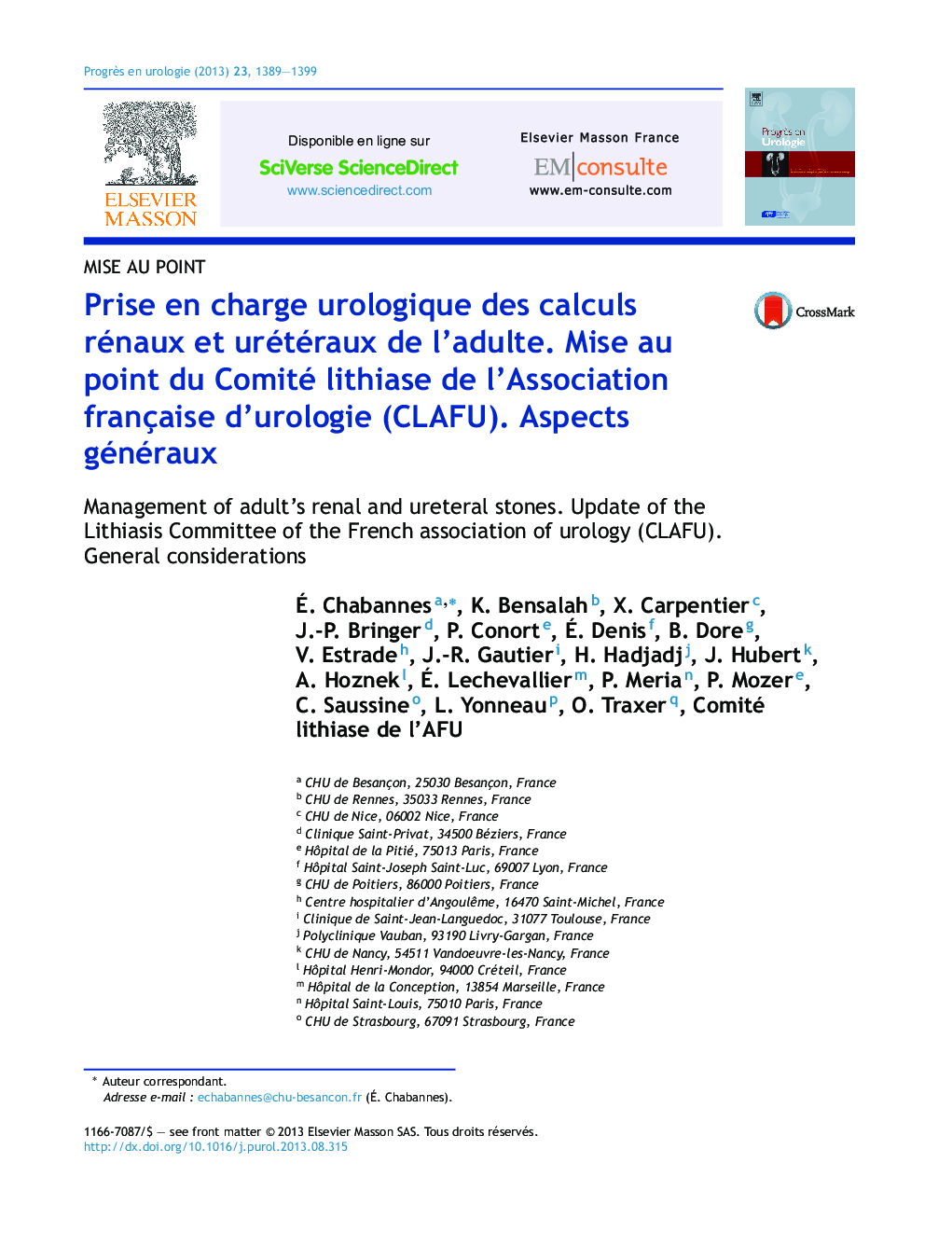| Article ID | Journal | Published Year | Pages | File Type |
|---|---|---|---|---|
| 3824442 | Progrès en Urologie | 2013 | 11 Pages |
Abstract
The Lithiasis Committee of the French Association of Urology (CLAFU) aimed to update the current knowledge about urolithiasis. This update will be devided into four parts: 1) general considerations; 2) the management of ureteral stones; 3) the management of kidney stones; 4) metabolic assessment and medical treatment of urolithiasis. Recent technicals advances helped the urologists to improve stones management: new extracorporeal shockwave lithotripsy (ESWL) devices, new flexible ureterorenoscopes, development of laser fragmentation. ESWL, semi-rigid and flexible ureteroscopy and the percutaneous nephrolithotomy (PCNL) remain currently the main therapeutic options. The first part of this update deals with the description and classification of stones, preoperative assessment, post-operative management and clinical follow-up. Main criteria of therapeutic choices are stone location, stone composition and stone size. Stone composition is assessed with infrared spectrophotometry analysis and its hardness is correlated with U.H. density on CT scan assessment. Preoperative assessment consists in urinary cytobacteriological examen, urinary PH, blood creatininemia, hemostasis. Low-dose CT scan is recommended before urological treatment. The result of the treatment must be done 1 or 3Â months later with plain abdominal film and ultrasonography. Medical management of urolithiasis will be based on stone composition, metabolic and nutritional evaluation. Treatment success is definited by absence of residual fragments. Annual follow-up is recommended and based either on plain abdominal film and ultrasonography or low-dose CT scan.
Related Topics
Health Sciences
Medicine and Dentistry
Medicine and Dentistry (General)
Authors
Ã. Chabannes, K. Bensalah, X. Carpentier, J.-P. Bringer, P. Conort, Ã. Denis, B. Dore, V. Estrade, J.-R. Gautier, H. Hadjadj, J. Hubert, A. Hoznek, Ã. Lechevallier, P. Meria, P. Mozer, C. Saussine, L. Yonneau, O. Traxer,
